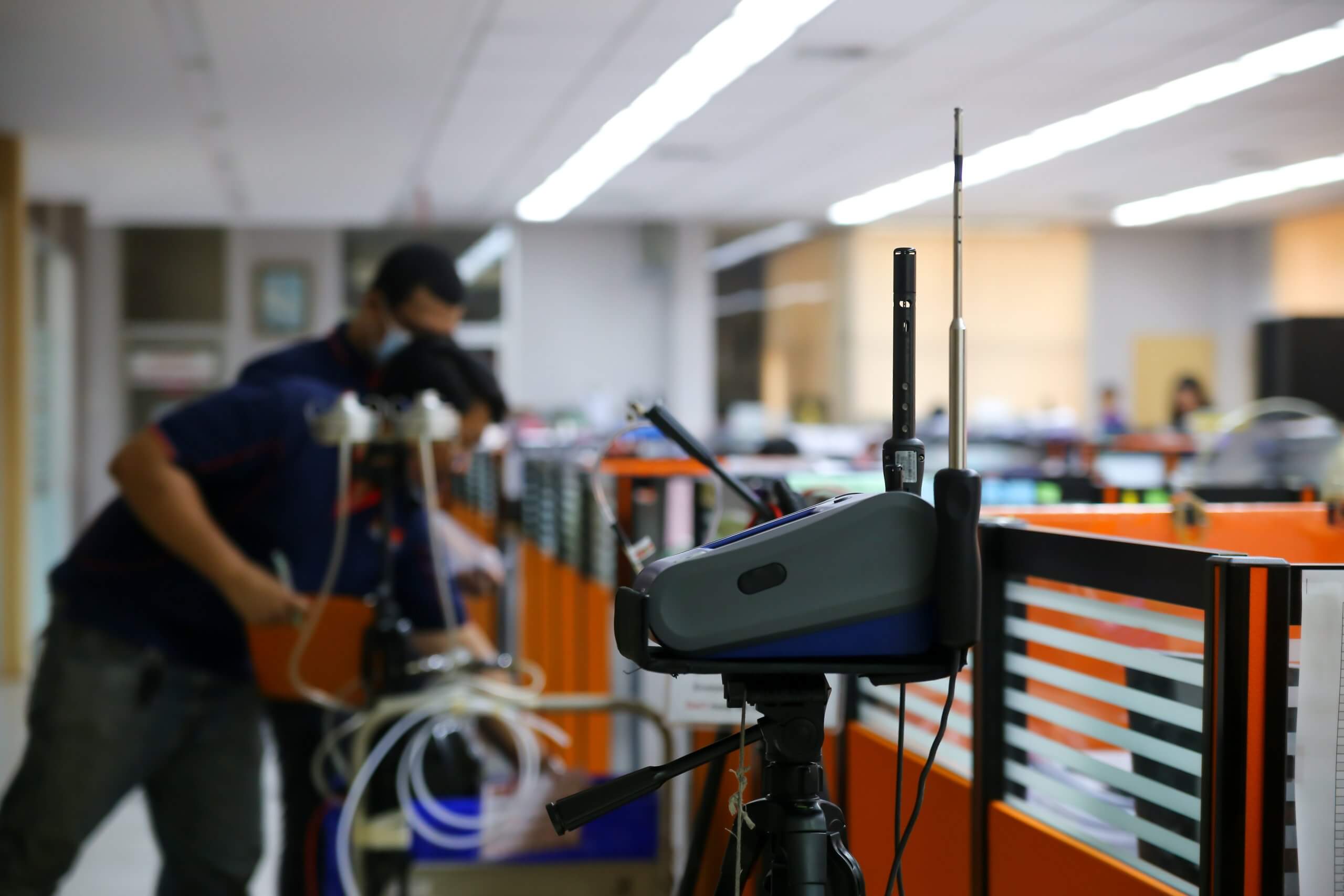Imagine this–you’re at a restaurant and order water and a glass of wine. The server brings your drinks. The wine appears fine but your water looks a little funny. Maybe it’s murky, has floaties or just doesn’t look drinkable. Do you stay or do you go?
For a majority of the modern developed world, we take our clean water supply for granted and trust that it’s safe enough to drink. The same often goes for air. But as we all learned in 2020, just because we can’t see contaminants and germs in the air around us, doesn’t mean they’re not there. There’s a coming movement on how and why we should focus on cleaning indoor air.
A Brief History of Clean Drinking Water
One of America’s greatest public health achievements in the 20th century was cleaning the water supply, according to the Centers for Disease Control (CDC). The move to disinfect community drinking water began in 1908 in Jersey City, New Jersey. As a result, cholera and typhoid disease infection rates decreased significantly. After seeingJersey City’s success, thousands of U.S. cities began to pursue water disinfection processes. This has resulted in America’s drinking water supply as one of the safest in the world.
It’s time we took indoor air safety as seriously as we do food safety, sanitation, and clean drinking water.https://t.co/BDXKa2MHB9 pic.twitter.com/XOHApsnI9D
— Céline Gounder, MD, ScM, FIDSA (@celinegounder) May 30, 2021
An International Call for Cleaning Indoor Air
Professor Lidia Morawska, director of Queensland University of Technology’s International Laboratory for Air Quality and Health is one of 40 scientists who believes indoor air should be the next public health focus. She, along with dozens of other air quality experts, are leading a global call for improved indoor environmental health and a focus on cleaning indoor air.
“We need to establish the foundations to ensure that the air in our buildings is clean with a significantly reduced pathogen count, contributing to the building occupants’ health, just as we expect for the water coming out of our taps,” Professor Morawska said for ScienceDaily about the Science publication.
“Mandated building ventilation standards need to include higher airflow, filtration and disinfection rates, and monitors that allow the public to observe the quality of air around them. We should have virus-free air indoors.”
We make sure our drinking water is pathogen-free. Why not our indoor air? I spoke to @jljcolorado about his + other scientists’ argument that we need a “paradigm shift” when to comes to regulating indoor air quality / improving building ventilation https://t.co/jV9IHNxbhk
— Kristin Toussaint (@kristindakota) May 13, 2021
The experts are calling on engineering professional bodies and government organizations to step in and provide regulations. They want indoor air quality standards for buildings. They want each building to be graded based on ventilation abilities, similar to how a restaurant’s health and safety is graded.
A Comprehensive Approach to Cleaner Indoor Air
In addition to advocating for greater indoor air standards, you can take steps to improve your living space today. Knowing whether or not the air you breathe indoors is healthy and free of infectious diseases requires a comprehensive approach. One thing is certain, every home is different and there is no one-size-fits-all solution. What works for your neighbor’s or sister’s home, will not necessarily be the ideal solution for you and yours.
It begins with monitoring indoor air quality. That’s because it’s important to understand your home’s humidity range, ventilation rates and indoor pollutant levels. Knowing this information will give you a better idea of what solutions your space would benefit from and what your home needs to stay healthy. Talk with a local IAQ or HVAC expert about installing a central air monitor (installed directly into your home’s ductwork!) so you can measure and track all rooms at once. It sends data directly to your smartphone or tablet and sends data to the HVAC or IAQ expert who completed the install. This data allows you to understand your home’s indoor air quality pain points by the day, week and month.
It Starts With Monitoring Indoor Air
Monitors give you an idea of what your home needs. The answer could be better filtration to capture pollutants circulating in your home. It could be a mechanical ventilation solution, which helps exchange polluted indoor air with fresh outdoor air. Or, it could be a humidity control solution if your home is not in the ideal 40-60% range. Lastly, active air purification could be a proactive solution to target pollutants at the source. There’s an indoor air quality solution for every home. And accurate air quality readings via an IAQ monitor will help you decide which strategy to pursue.




